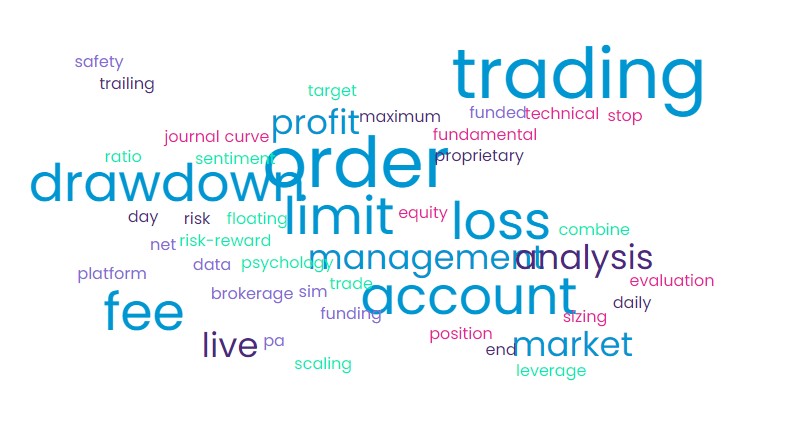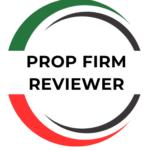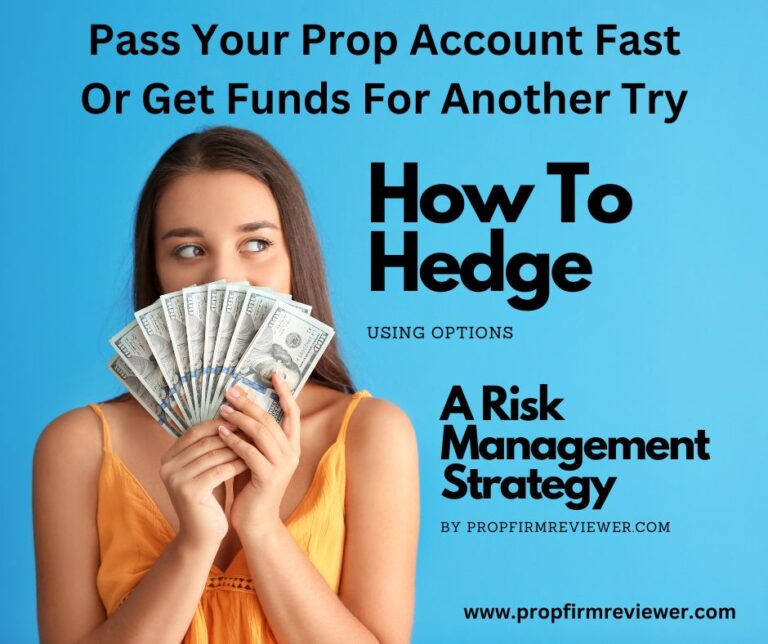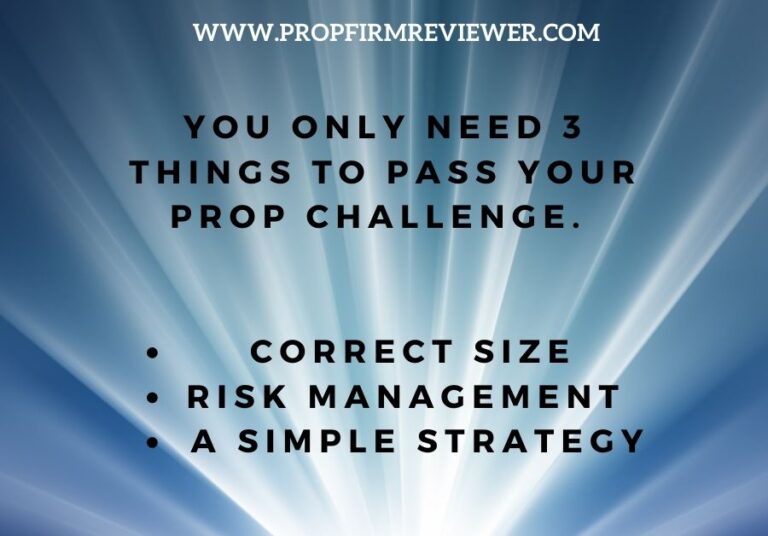Terms Used in Prop Firm Trading – A Primer

Are you new to the world of Proprietary Trading Firms? Are you confused by all the terms used in Prop Firm Trading? Here is a handy guide to the terms and phrases often used by prop firms and prop firm traders to help get you up to speed.
| Term | Definition |
|---|---|
| Proprietary Trading | Trading with the firm's capital, aiming to generate profits. |
| Evaluation Fee | The fee charged by the prop trading firm for participating in their evaluation process before getting funded. |
| Funding Fee | The fee paid to the prop trading firm upon successfully qualifying for a funded account. |
| Trading Combine | A testing phase where traders must meet specific criteria to qualify for a funded account with the firm. |
| Funded Account | The account you are given to trade after you pass your evaluation. It could be a live or a still a Simulation account. |
| Pa Account/Live Sim | Other names often used to refer to the simulated account you trade with and can profit from that isn't in a live market environment. |
| Live/Brokerage Account | A live account set up for you by the firm with margin or funds you have access to trade with under their control and rules. |
| Data Fee | The cost associated with accessing market data and real-time quotes. This is usually included with your evaluation but sometimes becomes an expense you pick up when you start trading in live markets. |
| Platform | The trading software or platform provided by the prop trading firm for executing trades and analyzing markets. Most common Prop Firm platforms are Ninja Trader, Tradovate, and Rithmic for Futures and MT4 or MT5 for Forex. |
| Trailing Drawdown | A measure of the maximum decline in account value from its peak, considering the highest point to the current point in time. |
| End of Day Drawdown | The reduction in account value at the end of a trading day compared to the opening balance that day. |
| Risk Management | Strategies and processes implemented to control and mitigate potential losses in trading activities. |
| Maximum Loss | The predetermined maximum amount of capital a trader is allowed to lose during a specific trading period. |
| Daily Loss Limit | The pre-established limit on losses a trader can incur in a single trading day. |
| Drawdown Limit | The maximum allowable decline in account value from its highest point before a trader is disqualified from the trading combine. |
| Profit Target | The predetermined amount of profit a trader aims to achieve during a specified trading period. |
| Risk-Reward Ratio | A measure of potential profit relative to potential loss in a trade. |
| Account Scaling | The means by which the prop firm allows you to increase your position size or margin balance. |
| Scaling In/Out | Gradually increasing or decreasing position sizes during a trade to manage risk and maximize profits. |
| Leverage | Using borrowed funds to increase position size and potential returns. |
| Market Sentiment | The overall feeling or attitude of traders and investors toward a particular market or security. |
| Trade Management | The process of actively monitoring and adjusting trades to optimize outcomes. |
| Floating P/L | The unrealized profit or loss on open positions that have not been closed yet. |
| Technical Analysis | Analyzing historical price and volume data to forecast future price movements. |
| Fundamental Analysis | Evaluating a security's intrinsic value based on economic and financial factors. |
| Position Sizing | Determining the appropriate amount of capital to allocate to each trade based on risk tolerance. |
| Market Order | An order to buy or sell a security at the best available price in the market. |
| Limit Order | An order to buy or sell a security at a specified price or better. |
| Stop Loss Order | An order placed to automatically sell a security when it reaches a specified price, limiting potential losses. |
| Take Profit Order | An order placed to automatically sell a security when it reaches a specific profit target. |
| Equity Curve | A graphical representation of a trader's account value over time. |
| Trading Journal | A record of trades, strategies, and emotions kept to learn from past experiences and improve future performance. |
| Safety Net | The amount of profits you are required or encouraged to leave in the funded account, which serves as your drawdown. |
We hope you found this comprehensive list of terms used in prop firm trading terms beneficial and that it has provided you with valuable insights into the world of proprietary trading. Understanding these terms is essential for aspiring traders and can help you navigate the challenges of the market with confidence. As always, if you don’t understand something on a prop firm site, reach out to the firm to clarify.
 While these are some of the most frequently used terms we’ve seem, some firms and challenges use terms unique to their brand, like the Combine and the Gauntlet.
While these are some of the most frequently used terms we’ve seem, some firms and challenges use terms unique to their brand, like the Combine and the Gauntlet.
If there are any other terms you believe should be added to the list, please feel free to leave them in the comments below. Your feedback and contributions will help us improve and expand our resources for the trading community.
For those eager to take their trading journey to the next level, we encourage you to explore our recommended prop firms and sign up for an exciting trading challenge today. Embark on this rewarding adventure and showcase your skills as you work towards becoming a successful prop trader.
Check out our recommended prop firms and embark on your trading challenge today! Unlock the potential of proprietary trading and take control of your financial future. Join us now to experience the excitement and rewards of trading with the support and resources of a reputable prop trading firm. Let’s elevate your trading journey together! Happy trading!
If Forex trading is of interest to you, we suggest our other site, Learn To Day Trade Forex, for Forex Firm reviews and educational content related to the exciting world of trading in Forex Currency Exchanges.






